
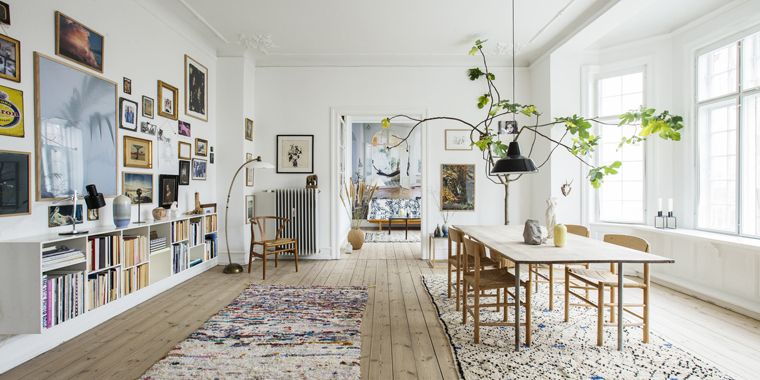
Fruit?
If you want a fig tree that fruits, steer clear of the ever-popular decorative fiddleleaf—which won't even consider it. Instead choose a small cultivar like Brown Turkey (also known as Negro Largo or Aubique Noire), which tolerates heavy pruning, is self-pollinating, and can thrive indoors. They'll sprout pretty oblong leaves.
Planting & Care
The size of the pot you choose will factor into how large and productive your tree becomes (opt for a larger planter for more fruit, smaller if you need the fig tree to stay small). Water it about once a week, until it comes out of the drainage holes, and prune when it reaches the size you want.
Habitat
While inedible fig trees do fine in indirect sunlight, edible cultivars will need to be positioned in bright light—right in line with a northern exposure would be ideal. They don't like the cold at all, so keep away from drafty doors and windows.
2. Lemons & 3. Limes
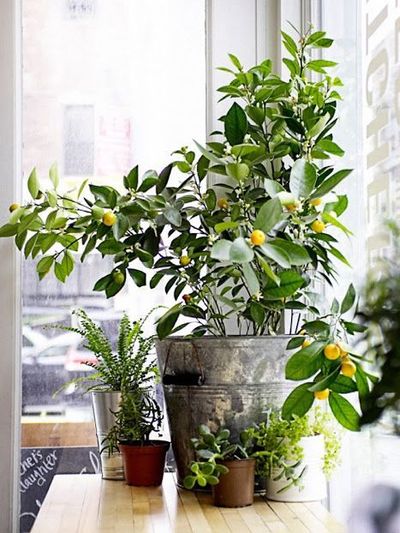
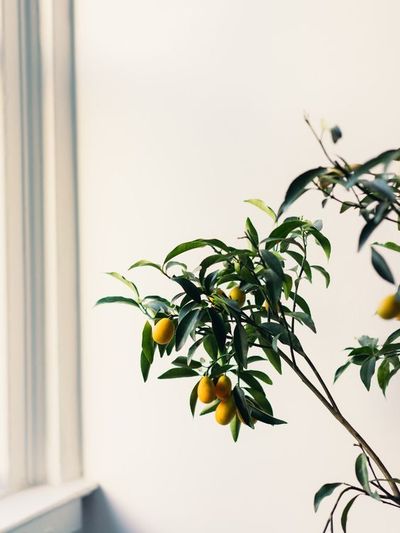
Fruit?
If you want to grow lemons and limes inside, opt for a dwarf cultivar that self-pollinates—like Meyer Lemon (which doesn't require as much heat to ripen the fruit) or Kaffir Lime; they'll yield the quickest crop and the plant will stay a manageable size.
Planting & Care
The best soil for growing healthy citrus trees is slightly acidic and loam-based (meaning 2:2:1 sand to silt to clay). They also like lots of moisture in the air—up to 50% humidity, ideally!—but you can simulate that environment by spritzing them regularly with water from a spray bottle. Let the soil fully dry out before watering.
Habitat
No surprise here: Citrus plants need a whole lot of sunlight—8 to 12 hours of it every day. Place your tree in the sunniest spot you have—better yet if it's a room with double exposure (southern and eastern, say). And if you have any outdoor space, they'd appreciate a few months in the fresh air if you have a balmy summer.
More: A week of dinner recipes inspired by a bag of Meyer Lemons.
4. Olives
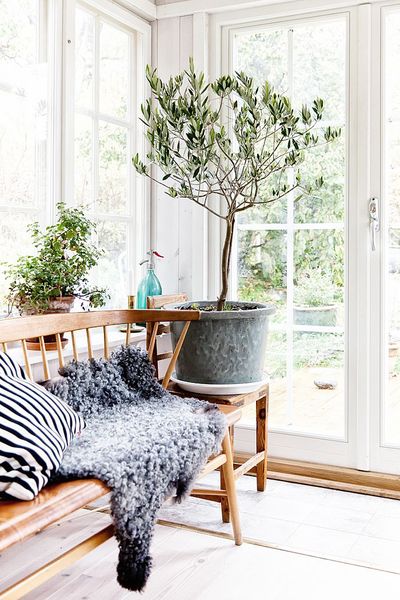
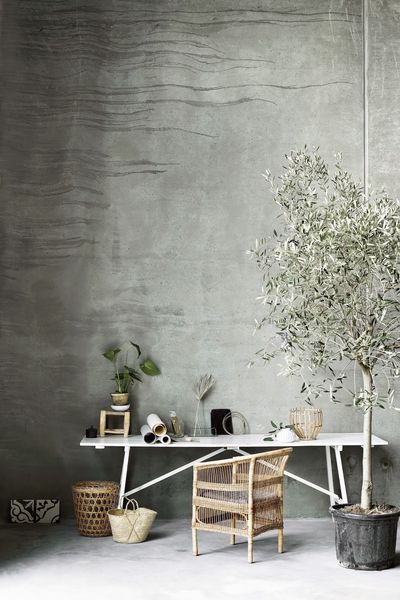
Fruit?
Self-pollinating and prolific (a single tree can produce as many as 20 pounds of fruit a year), olive trees do not require much care compared to other fruit trees. When shopping for an indoor olive tree, keep in mind that many cultivars are purely ornamental, meaning they won't fruit, but there are great indoor varieties that will: Consider an Arbequina—which is slow-growing and will drip water through the leaves (called "weeping")—or a Picholine, which is more upright.
Planting & Care
Indoor olive trees need only be watered when the top inch of soil has dried out, and less in fall and winter when they take a natural rest.
Habitat
An olive tree needs at least 6 hours of solid sunlight each day. Place it near a sunny, south-facing window (but not too close or the leaves will frizzle).
5. Avocados
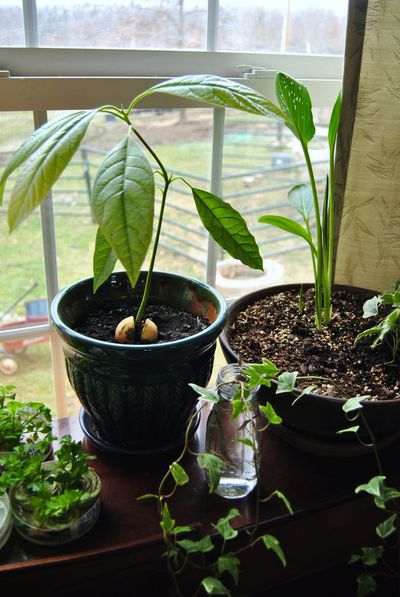

Fruit?
To be clear, it's very very tough to get an indoor avocado tree to fruit but it isn't impossible. Instead of growing one from a seed (that is, the pit—see above left), seek out a grafted starter plant that has some tissue from a tree that does produce good-tasting fruit. Naturally small trees—like Wurtz, Gwen, and Whitsell—are your best bet, and they don't have to be cross-pollinated to fruit.
Planting & Care
Add some sand to the bottom of a pot and fill in with regular potting mix so your tree doesn't get wet feet, and water it regularly without letting the soil get sopping wet. Ripe fruit can be left hanging on the tree for a few weeks.
Habitat
Warm-season plants, avocados like lots of bright light. Right in line with a south-facing window is your best shot at finding it a happy place!
6. Bananas
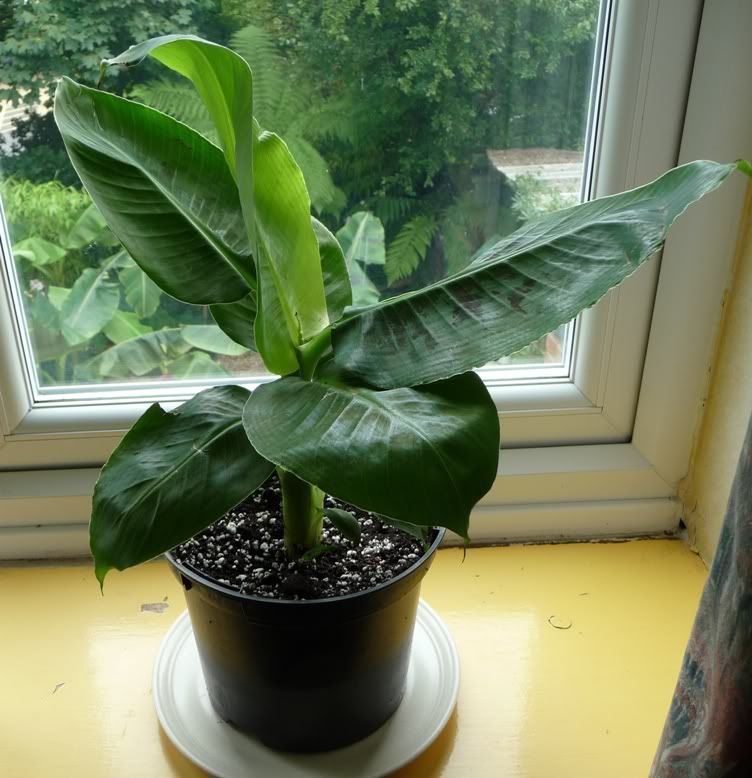
Fruit?
Some banana trees produce edible fruit while others produce fruit you can't eat—and again you'll want to get a dwarf plant—such as Super Dwarf Cavendish or Dwarf Red—so that it doesn't grow too huge. They're self-fruitful, meaning they don't require a pollinator.
Planting & Care
Your banana tree's soil should be light and peat-y; fertilize it monthly to keep it growing strong. They like lots of water due to their enormous leaves, but you'll want to let the soil dry out fully between waterings. The leaves can be misted to simulate a humid climate.
Habitat
Lots of bright indirect sunlight is best, so set it up near a southern-facing exposure if possible. Rotate the plant periodically so that all sides get light.
7. Mulberries
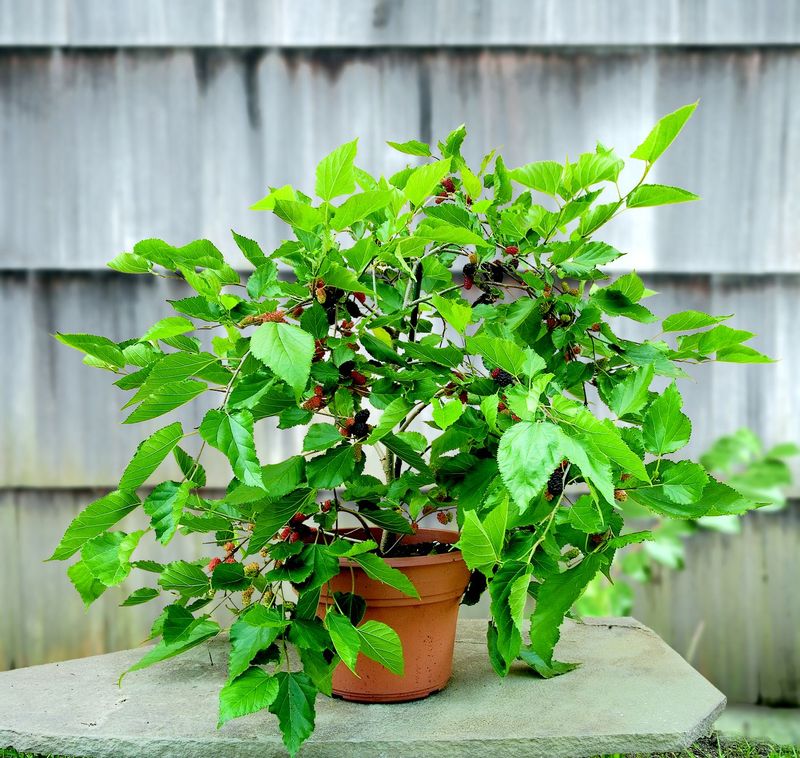
Fruit?
Yet again, you'll want to opt for a dwarf mulberry tree such as Dwarf Everbearing if you're growing it indoors. The fruit of a mulberry tree, which will look something like a blackberry but smaller, should be picked as soon as it's ripe—and the tree's fruit supply will ripen over time rather than all at once.
Planting & Care
Regular potting soil works fine, as will regular watering! Mulberry trees are slow-growing and like roomy pots.
Habitat
A warm, bright, sunny space is best for your mulberry tree; move it to a spot with full exposure from spring through fall, if possible.
Note: This piece originally indicated that fig trees only require indirect light, but has been updated to clarify that edible fruit-bearing fig trees need lots of direct sunlight.
Original article and pictures take https://food52.com/blog/16084-7-types-of-fruit-trees-you-can-grow-in-your-living-room site
Комментариев нет:
Отправить комментарий